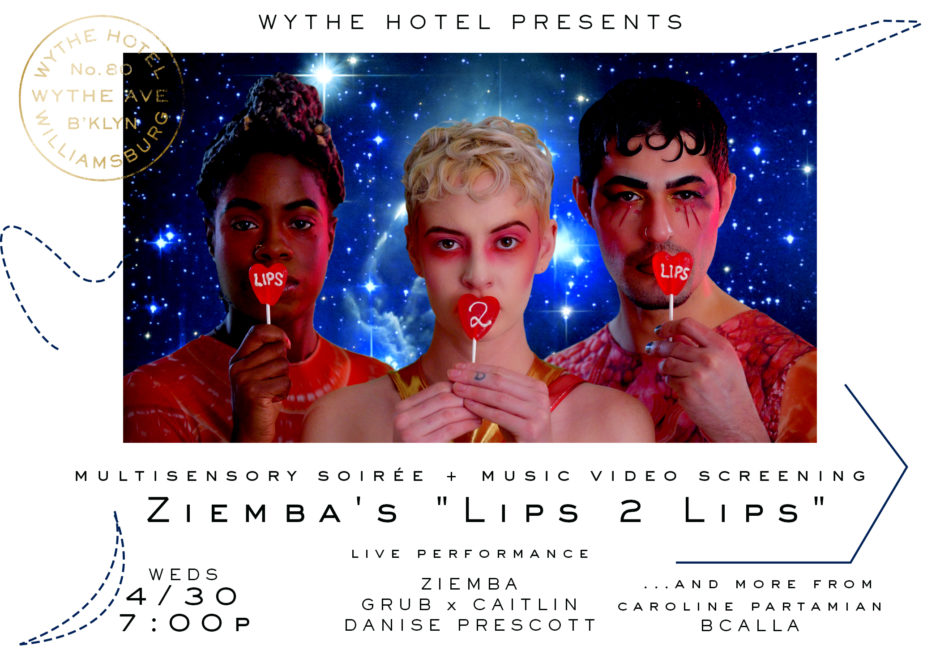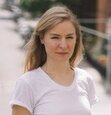|
Artist and Curator Kimia Kline is Taking Williamsburg’s Wythe Hotel Live With Time-Based Art Programming By Alexandra Hammond @walliealie The Wythe Hotel, cornerstone of upscale bohemian Williamsburg is inviting time-based works into its walls through its residency program. I spoke with artist-cum-curator Kimia Kline earlier this spring to learn about her vision for the theater space and how she sees the potential for a hotel to double as a cultural institution. While The Wythe is popular with New Yorkers seeking rooftop views and art events, it also has a unique ability to convene an audience of visitors from the world over, thus exposing the work and ideas of Brooklyn-based artists to an audience that might never think of visiting a gallery, let alone an alternative performance space. The residency was awarded to four artists this year: vocalist, and dance artist Quenton Stuckey; interdisciplinary artist Katya Grokhovsky; filmmaker and comedian Tynan DeLong; and artist and gallerist Scott Ogden. Each artist was chosen for the boundary-breaking quality of their work, and their willingness to share aspects of their creative process with the audience in the setting of the Wythe hotel cinema. Alexandra Hammond (AH): Tell me how the residency came about. Kimia Kline (KK): We put out an open call because we wanted people to re-imagine our cinema space. We wanted to be really open and flexible. Some proposals have been for performance, like Katya Grokhovsky and Tynan DeLong, but we’re also screening films such as Make, a documentary on outsider artists by artist and gallerist Scott Ogden. The way we have envisioned the residency program has been to fill the space with content that is fresh and may be in process. We have this amazing room (the cinema). We ask artists, what is your proposal to re-imagine the space? What do you want to do for one night where we invite the community, where we support you with our network, and you come in and do a sort of takeover… And give us a peek into your process. Some artists have wanted to try out new material because we see it as a really friendly place to fail and try new things. The Residency has turned into a safe space for the creative process to come out and be front and center. Often what you see [in a gallery] is a final product, but what we wanted, and why we called it a residency was to see that the process itself. AH: It's interesting because its a private space given that its a hotel, but it's also a public space because its Williamsburg. KK: Exactly. And it's a public hotel. You don’t have to be staying here to be going to the residencies. AH: What makes this a residency as opposed to a presentation series? KK: We give financial support to the artists to create the work. We’ve had series in the past and people have come in and told us their ideas and they’ve just used the space. But this feels more like a partnership. These are artists who are up and coming and we really believe in. We promote them on our own social channels, we do a lot of PR around it. Its evolving, and I would love to find more ways of making it feel like a true residency. Like, maybe artists could come stay at the hotel. It’s also site specific. The first artist we hosted for example, Quenton Stuckey, used the layout of the space. He had vocalists, dancers and also video. And he tailored everything to the theater space. So it was a site specific piece to the hotel and more specific to our context. AH: Is there anything about the content of Stuckey’s work that relates to the hotel context? KK: I think that one of the things that was most interesting for us is each artists story and the way that they connect to the story of Brooklyn. Stuckey is African American and from the South. His father is a preacher and he identifies as queer. So he came to Brooklyn to pursue his calling. It’s this quintessential Brooklyn story of a creative who finds their home in New York. Leaves home to find home here. AH: What unifies the artists and works that you selected? KK: We were looking for quality and we really wanted diversity in terms of what we were showing and to whom we were giving the opportunity. We were most interested in the artists’ level of creativity in re-imagining the space. Our context as a hotel. We’re not a white box gallery or a museum. We are space that’s hospitable to a different public, and in that way we’re an alternative space. We have people staying with us from all over the world who are all invited to see the work of the residents. We wanted artists who were prepared to engage with not only a Brooklyn-based audience, but the wider audience. AH: How did the artists respond or propose to respond to this sort of hotel space, the fact that people were viewing in a space that is other than a gallery or museum or even a black box theater? KK: Some of the work has been in process. You wouldn’t normally see that in a gallery or a white box. What’s different about us is that we are totally okay with you getting up on stage and trying things out and being sort of rough around the edges. I think it really just speaks to the hotel’s ethos: the authentic desire to support artists— and a range of artists— in giving them whatever they need to continue making work in Brooklyn. And having that work be seen. The owners have always wanted this hotel to feel authentic to Brooklyn — organic and of the neighborhood. One of the things that makes Brooklyn so distinct as a neighborhood is the art world. I think they knew that if this place was really going to be— was going to feel of the neighborhood— that the art program was going to have to be something that was real and that they put money and time into, and energy and focus. Contemporary art is baked into the entire philosophy of why they even wanted to open a hotel in Brooklyn. AH: How is it different to curate this residency and time-based works than to curate paintings and drawings? KK: I would actually say that that it’s the same. The bridge that I see between the two programs at the Wythe is the in-process nature of the work. The pieces in the rooms are sketches and sketchbooks. And what we’re doing in the cinema is kind of the same thing. We don’t know how the night is going to unfold, who’s going to show up. We don’t necessarily see the work beforehand. We see a clip or hear a presentation. But you can’t know what an entire performance is going to be before you slot it in. It’s that experimentation that we are placing at the forefront.
KK: ...What’s so cool about this hotel is that it was a factory from 1901 that has been re-imagined into this hotel. But all of these spaces are really unique and beautiful and I feel are like begging to be activated by performance artists. I talked to a lot of artists and asked, ‘how else can we serve the community?’ And there was a need— there was a need for spaces and support for performance artists and time-based work. I felt that this was such a unique building, and it’s a really unique context in Brooklyn, next to the waterfront in Williamsburg, so all those things converged into this residency. AH: Who is the main audience for the residency thus far? is it mostly hotel guests? Is it mostly people from around Brooklyn and New York City? KK: I would say it’s mainly the New York art world. With visitors mixed in… So it’s exciting because sometimes a hotel can feel removed from the city because the people who frequent it aren’t necessarily locals. For us, our programming is like a hidden gem. If you’re in New York and you’re in the art world then you know you can come to Wythe Hotel for art world events. AH: Do you think that there’s an opportunity for a place like a hotel to expose people who aren’t generally exposed to this type of work? KK: Yes. We promote the residency on all of our social channels. We have around 65,000 followers on Instagram and those are people from all over the world. That is not the New York art world. Our support and promotions live on our websites. They go out to our email lists. We are, in a way, taking artists and exposing them to a network that never would have heard or seen them or even been interested. It’s like grandmas from Ohio who come and stay with us… and all sorts of different people. AH: I think this is an interesting conversation because there’s a real need for artists to be supported in different ways besides just gallery representation. KK: It’s interesting to think about people not feeling comfortable going into a gallery but feeling more comfortable walking into a hotel. It’s a reality, I think. With our social media reach and our reach as a business, there’s a whole new platform for artists to reach out and get their work seen. AH: How is it to be an artist and curator and how you see those things as being connected? KK: I definitely think that being an artist makes me a better curator. And I think that being a curator has made me a better artist. Because I am a maker, I think I have a different eye for process and final product and quality. Because of that, when I see work, I’m looking at it through a completely different set of eyes and a completely different material understanding than someone who just studied art history or writing. I think the two practices really feed each other. And it’s been a fabulous, fabulous experience for me to do both. I’ve loved it. AH: When does the next round of applications open? KK: Keep an eye on our Social Media Channels in late spring / early summer this year. We’ll also be posting the opportunity on NYFA and Residency Unlimited. It’s an open call, and there’s no fee to apply. next PERFORMANCE EVENT AT WYTHEABOUT |
CONTRIBUTORSIan Deleón Archives
July 2023
|
|
MISSION // Based in Brooklyn, NYC, PERFORMANCE IS ALIVE is an online platform featuring the work and words of current performance art practitioners. Through interviews, reviews, artists features, sponsorship and curatorial projects, we aim to support the performance community while offering an access point to the performance curious.
Performance Is Alive is a fiscally sponsored project of Fractured Atlas, a 501(c)(3) charity. Contributions made payable to Fractured Atlas for the purposes of Performance Is Alive are tax-deductible to the extent permitted by law. |





